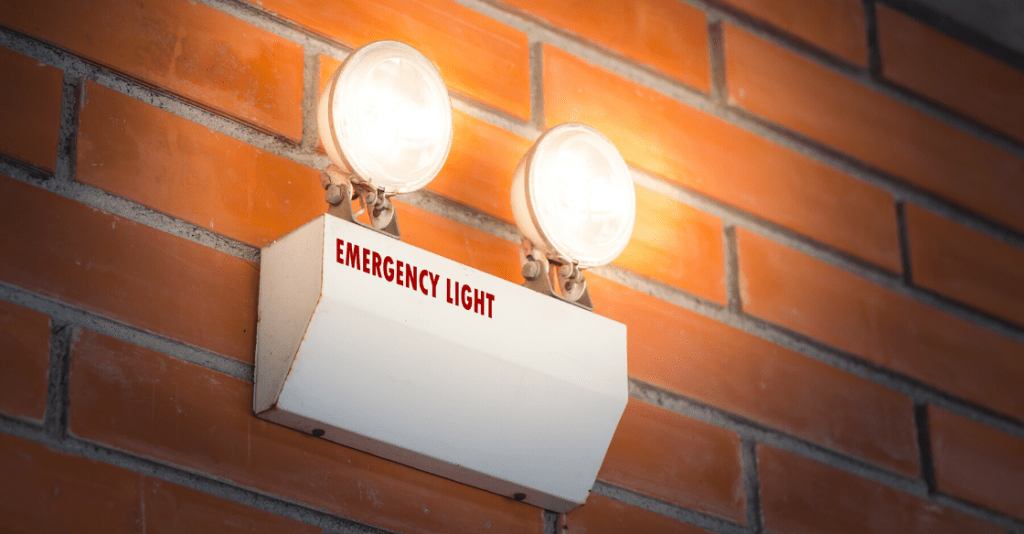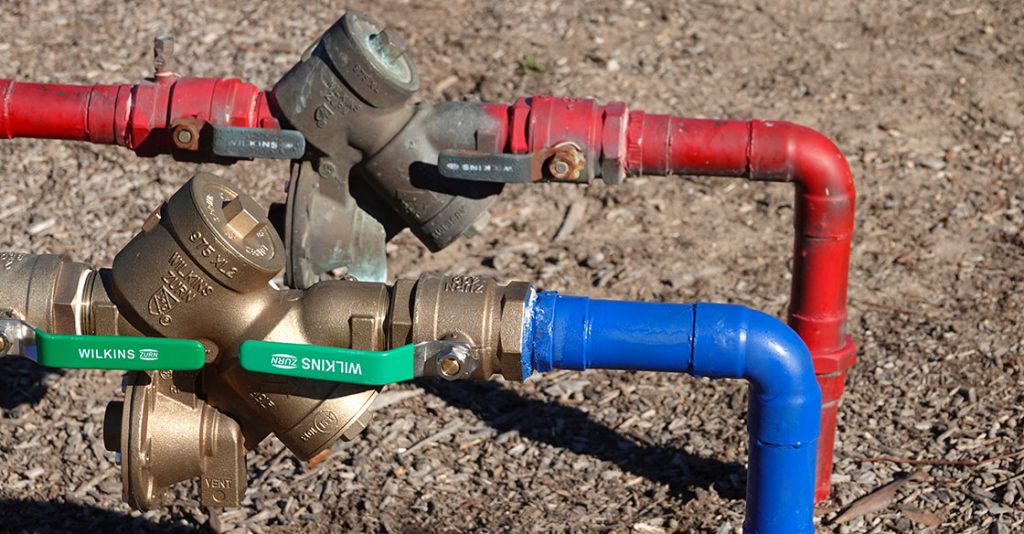Most of our at-home fire-fighting equipment is limited to smoke detectors and maybe a small kitchen or fireplace extinguisher. We only see sprinkler heads and fire pulls in commercial buildings.
With the number and intensity of fires growing every year, however, more homeowners are installing their own home fire sprinkler systems.
A home fire sprinkler system drops about 8-24 gallons of water a minute, enough to reduce or fully extinguish flames. A sprinkler system gives home occupants time to quickly get all family members evacuated. It also gives the fire department a running start on battling the flames, saving some or all of the structure and its contents.

Fire Alarm Inspections and Maintenance
If you do plan to install a home fire sprinkler system, understand that keeping it in working order will require regular inspections.
When you understand how home fire sprinkler systems work, you know each one of these checkpoints is critical:
- Water Tank: Homes with sprinkler systems will need a water tank holding 300 gallons of water. Inspectors must include the water tank to ensure it’s full.
- Sprinkler System Valves and Pumps: Your sprinkler system inspection will include operation and key location of these parts. For example, a pump should not be placed less than one and a half inches off the floor. Also, home systems require a 240-V pump to avoid circuits breaking in an emergency. The pumps must work for the whole system to drop the water on the flames.
- Fire and Smoke Alarm: When you select fire sprinkler system services, make sure to include fire alarm inspections. Examples include making sure the alarm is certified, and all gauges are correctly working with fire alarm monitoring. x
- Sprinkler Heads and Pipes: When these elements wear out or clog, the system will be less effective or ineffective in fighting flames. Replace any sprinkler heads or pipes with those from the same model and manufacturer.
Fire Sprinkler Installation: Professional Job or Do-It-Yourself
A few sprinkler system installers will come into your home to install a system. Complex home fire sprinkler systems are best left to professional installers. Fire sprinkler heads are classified based on how they are placed and work.
They can be “pendent,” which means that they hang on ceilings and on the underside of a pipe that drops water. An “upright” sprinkler head goes on top of the supply pipe, so that water can go around obstructions. A “sidewall” sprinkler head is placed on the sides of the walls and expresses water at an angle.
Pipe layouts can get complicated, too. A standalone layout has separate pipes for the sprinklers by itself, while a combined layout shares the pipes for your sprinklers and plumbing fixtures.
“Concealed” sprinklers—made of a plate that covers the head—help your home can look more aesthetically pleasing. Once the plate senses a particular temperature, it drops to expose the sprinkler head.
Some considerations when installing fire suppression systems include where to place your home fire sprinkler systems. Please make sure they are visible and show every member of your household where they are located. Furthermore, do not place any furniture or equipment in such a way that it blocks the sprinklers from spraying water. Do not hang things from the sprinkler heads either, even if it’s a simple decoration meant to be hung for a short period of time. Also, refrain from painting the sprinkler heads, and do not ever turn the control valve off.
Visually check your system to make sure there are no leaks or damage. Run a test to see that the pump is working correctly. If you are buying a new home, be sure to check if a home fire sprinkler system is installed. Insist on an inspection and get all documentation from the manufacturer and installer.
Final Thoughts
Overall, having your own home fire sprinkler systems brings tremendous peace of mind and could even save your home and your life. Inspecting and maintaining these fire suppression systems regularly is just part of being a responsible homeowner.
To learn more about home fire sprinkler systems, fire sprinkler maintenance, and how to get the best protection, contact the experts at APFE Corp. at 1-866-353-2790. Our professionals will be happy to answer any questions you have.
Be sure to follow a checklist for home fire safety to know what else to have installed in your home on top of a home fire sprinkler system. Examples include carbon monoxide alarms, smoke alarms, and fire extinguishers. All of these fire suppression systems can be checked on a monthly and yearly basis through with fire sprinkler inspections.




